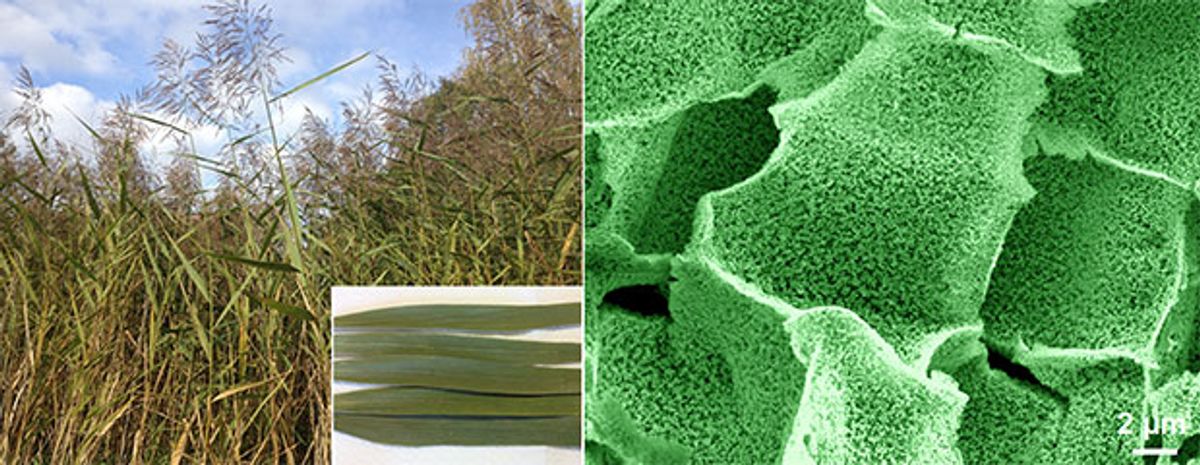Natural structures in reed leaves could find use in advanced lithium-ion batteries, which could lead to a more sustainable way to create sophisticated energy-storage devices, scientists in China and Germany say.
Silicon-based materials can theoretically store more than 10 times charge than the carbon-based materials most commonly used in the anodes of commercial lithium-ion batteries, making them promising next-generation anode materials. However, silicon’s big problem is that it can swell by more than 300 percent when filled with lithium. The constant swelling and shrinking as the battery charges and discharges, causes the anode to crack. One way to overcome this problem is to make silicon porous enough to accommodate the expansion. But synthesizing these structures is commonly a complex, energy-intensive, and costly process.
Now scientists have developed 3-D porous silicon-based anode materials using the kind of reed leaves that are abundant in temperate wetlands. Reeds naturally absorb silica from the soil, which accumulates in sheet-like structures around micro-compartments in the plants.
The researchers took common reeds from southwest Germany, dried them at high temperatures, purified them with hydrochloric acid, and made them into silicon-based anodes by heating them with magnesium and coating them with carbon. Although the 3-D structures of the leaves shrunk, the resulting material preserved the natural architecture found in the reeds.
After 200 cycles of charging and discharging, these anodes could store nearly three times more charge than carbon-based anodes; after 4,000 such cycles, although the amount of charge they could store diminished substantially, they could still store more than 15 percent more than carbon-based anodes. The scientists detailed their findings online 26 June in the journal Angewandte Chemie International Edition.
Charles Q. Choi is a science reporter who contributes regularly to IEEE Spectrum. He has written for Scientific American, The New York Times, Wired, and Science, among others.



